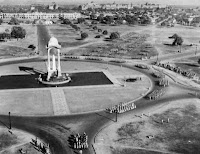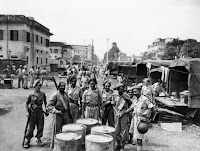 Nutrition diet for a healthy life
Nutrition diet for a healthy lifeBattling hypertension, cancer, diabetes, a weak heart or kidneys... right nutrition plays a key role. The National Nutrition Week just passed by (Sept 1-7). For a strong, healthy body and a happy mind, nutrition plays a pivotal part not just as prevention but as a tool for speedy recovery as well.
Diet in Cardiac Diseases
The best diet for a healthy heart is a diet low in fatty and sugary foods and rich in fruits and vegetables which are quick foods that require little or no preparation time. They are loaded with important nutrients like vitamins, minerals, fiber and disease fighting antioxidants.
Unsaturated oils (refined oils) help maintain blood cholesterol levels if consumed in recommended quantities. Thus it is advisable to use only 4-5 teaspoons of cooking oil per day and a variety of refined oils should be taken. Select one from each group for your daily cooking purpose. Ratio of both oils should be 1:1. It is advised to use oil from Group A for 15 days and oil from Group B for 15 days or lunch with oil from Group A and dinner with oil from Group B.
Group A: Sunflower / safflower/ corn / soybean
Group B: Mustard / groundnut / olive/ rice bran
High fiber food items like whole cereals [whole wheat flour ( atta ), wheat bran, whole wheat bread, bajra , jowar , oats], whole pulses ( dals with skin, rajmah , chola, kala chana, chowli etc.), leafy vegetables, salad vegetables and whole fruits are recommended.
Good quality protein like egg white, soy, fish chicken and dairy protein (toned/ skimmed cow's milk and milk products like curds and paneer prepared with cow’s toned milk) is recommended. Oily fish like ravas (salmon), herring, bangda (mackerel), tuna , tarli (oil sardine) and nuts like almonds and walnuts are rich in omega 3 fatty acids and found to be beneficial for heart. All these food items are advised in recommended quantities.
It is advised to avoid fatty meats like ham, bacon, yolk of egg, red meat, organ meat, shrimps, lobster, prawns, etc as well as alcohol, aerated drinks, squashes, fruit juices (lack fiber), canned, tinned, processed and preserved foods e.g. tinned fruits, sauces, processed cheese.
Diet for Hypertension
A vegetarian's diet contains more potassium, complex carbohydrates, fiber, calcium, magnesium, vitamin C all of which may have a favourable influence on blood pressure. It can be a great benefit to start lowering your blood pressure naturally.
Calcium: Consume skim / toned milk and milk products (curds and paneer). This milk is low in fat, but very high in Vitamin D and calcium, both of which are known to combat high blood pressure. Calcium can also be found in fish (sardines, salmon, mackerel), nuts, sunflower seeds (unsalted) and green leafy vegetables (beetroot leaves, turnip greens, arbi leaves, chowlai , methi leaves, cauliflower greens, celery leaves, parsley, mint, curry leaves, drum stick leaves and radish leaves). Cereals like ragi (nachni) and whole pulses like kala chana and rajmah , soybean and tofu are also rich in calcium. Spices include hing , ajwain , khas khas , black pepper ( kali mirch ), cumin seeds ( zeera ), coriander ( dhania ), cloves ( laung ) and mustard seeds ( sarson ).
Magnesium: Magnesium rich foods such as pulses and legumes and dark green leafy vegetables are an excellent way to lower blood pressure. Other good sources of magnesium are almonds, walnuts, coriander seeds (dhania ), cumin seeds ( zeera ), ginger, turmeric, plums and mango figs, whole grains, soy products, broccoli, oysters and mackerel. Magnesium has the effect of relaxing the blood vessels which allows the blood to flow easier.
Potassium: Restricting sodium (salt) intake to lower blood pressure appears to work better if accompanied by increasing potassium. Pulses and legumes, soybeans and cereals like bajra , jowar , ragi (nachni), whole wheat flour ( atta ) are good sources of potassium. Spices rich in potassium include coriander seeds ( dhania ), cumin seeds ( zeera ) and methi seeds. Vegetables like potato, sweet potato, yam ( suran ), tomatoes, karela , brinjal, drumstick, green papaya and dark green leafy vegetables like spinach, sarson ka saag , chowlai and coriander leaves are high in potassium. Potassium rich fruits include sweet lime, apricots, amla, bael, cherries, lemon, mango, muskmelon, watermelon, peaches, plums and seetaphal. Coconut water and vegetable soups are also rich in potassium.
Vitamin C: It seems to expand blood vessels and constricted arteries, consequently helping to lower blood pressure. Vitamin C rich foods include strawberries, lime, sweet lime ( mausambi) , orange, guava ( peru ), amla, radish ( muli ) leaves, fenugreek leaves ( methi ), coriander ( dhania ), cabbage, capsicum, green chillies, cauliflower and bitter gourd ( karela ).
Research also shows that eating foods high in fiber, such as oat bran, fruits, and vegetables can significantly reduce high blood pressure, and even improve blood pressure in healthy individuals. Omega-3 fats, typically found in oily fish, garlic and flax seeds are known to have a lowering effect on blood pressure.
Avoid foods like pickles, papads and salted chutneys, biscuits and namkeens, all sauces and soy sauce, cheese, salted butter, margarine, mayonnaise, baking powder, bicarbonate of soda, ajinomoto, breads, cakes, pastries, cornflakes, salted chips, nuts, popcorns, bacon, ham, sausages, malted beverages, boost, bournvita, preserved foods and canned foods.
Diet in Renal Diseases
Renal diet plays a major role in restoring the kidneys to function normally after a kidney-related ailment. A
special renal diet helps to control the buildup of toxic fluids in the blood and decreases the stress on the kidneys. A typical renal diet controls the intake of protein, potassium, phosphorus and sodium.
Nutrition for chronic kidney failure involves variable nutrient adjustment according to the individual needs of patients. It is required to provide just enough protein (50 per cent of high biological value) to maintain tissue integrity while avoiding a damaging excess. Carbohydrates and fats must supply sufficient calories to reduce the need for proteins. With non-dialyzed patients, fluid intake should be sufficient to maintain an adequate urine volume. Intake is usually balanced with the output. The need for sodium varies. If hypertension and edema are present, salt intake is usually recommended in very low amounts between 2-5 grams/day.
The damaged kidney/ kidneys cannot clear potassium adequately and so the dietary intake is kept low or moderate. Therefore, it is important for patients to be aware of the potassium levels in various foods so that they consume cereals, pulses, fruits and vegetables that have low to moderate potassium content.
Usually, nutrition therapy for dialysis patients is planned with more liberal nutrient allowances and the patient is encouraged to eat a variety of foods to help maintain normal body weight and nutritional status.
Diet for Cancer
It is very important to eat well during cancer treatment. One needs to have adequate calories and proteins which would help prevent weight loss, regain strength and rebuild normal tissues. If one is overweight, the Clinical Nutritionist can assist with weight loss after the treatment is over and one is fully recovered. If one is losing weight during the treatment, the clinical nutritionist can assess the calorie needs and create a meal plan to stabilize the weight.
Free radicals damage the DNA, rearranging the genes within the cells, which leads to the development of cancer. Antioxidants are free radical scavengers which can prevent less aggressive malignant cells to transform into more aggressive types which are more likely to grow and spread faster. These are found in variety of foods as listed below:
Phytochemicals:
Vegetables: cabbage, spinach, broccoli, onions, celery, citrus fruits (especially ripe): pomegranates, kiwis, plums, apples, lemons, apricots, plums, pears, oranges, strawberries, bananas, grapes.
Mushrooms: white
Dried fruits: raisin, prunes, apricots.
Pulses and legumes
Herbs ans spices: Garlic, parsley, mint, coriander, thyme, rosemary
Green tea
Carotenoids: beta-carotene (carrots, peaches, apricots, spinach)
Alpha-carotene: carrots and pumpkins
Cryptoxanthin: oranges, papaya, peaches
Lycopene : tomatoes, watermelon and pink grapefruit
Lutein and Zeaxanthin : spinach, red pepper, peas, broccoli, celery
The diet should consist of unsaturated oils and omega-3 fatty acids which can be of great benefit rather than saturated and trans-fats which are bad fats. A high fiber diet can prevent colon cancer. Fiber moves potential carcinogens through the intestines faster, decreasing the contact time between carcinogens and the intestinal wall. Small frequent meals are recommended.
Also in conditions with advanced cancer or those whose tumours or treatments have affected their ability to eat or digest food, such patients should seek advice from a clinical nutritionist attached to a hospital.
Diet in Diabetes
Management of diabetes requires self-discipline and self-control under the guidance of a doctor and a nutritionist.
Effective diabetic management requires a healthy lifestyle which should include a balanced diet, regular exercise and sensible weight control.
Carbohydrate: The distribution of carbohydrate in various meals is determined by whether or not the patient is on insulin therapy. According to the type of insulin calories from carbohydrate need to be distributed. When not on insulin, the carbohydrate is divided equally between breakfast, lunch and dinner.
Spread the intake of carbohydrate foods throughout the day. Eating large amounts of carbohydrates at one time produces increased amounts of glucose and stimulates the release of increased amounts of insulin which can cause blood glucose levels to drop.
There should be steady release of glucose into the blood stream. Therefore in between snacks should be stressed to avoid hypoglycemia. Eat 5-6 small meals rather than 2-3 large meals.
High fiber foods as mentioned in diet for cardiac diseases are recommended.
Protein: Proteins are required in adequate quantity as proteins do not raise blood sugar levels during absorption like carbohydrates. In poorly regulated diabetes, large quantities are excreted through urine therefore the protein requirement is higher. Proteins promote satiety, provide essential amino acids for tissue repair to be restricted in case of early kidney disease.
Fats: Diabetics are prone to atherosclerosis. Therefore fat intake has to be restricted. Same guidelines as for diet in cardiac diseases have to be followed.
Vitamins and minerals: A diet rich in antioxidants like B carotene, Vitamin E and C should be emphasized.
Dietary sodium may have a role in the development of insulin resistance. Moderate sodium restriction is beneficial.
Meal combination is also an important factor in managing blood glucose levels. Combining protein, fat and carbohydrate at meals and snacks can lead to a better control of blood glucose levels and doing so, slows down insulin release than meals or snacks that consists mainly of carbohydrates.
(The writer is Clinical Nutritionist with Fortis Hiranandani Hospital, Fortis Network
Hospital, Navi Mumbai) Click here to Read more!



































 Millions left for their new homeland with smiles on their faces as trains left both India and Pakistan. This is a train to Pakistan being given a warm send-off.
Millions left for their new homeland with smiles on their faces as trains left both India and Pakistan. This is a train to Pakistan being given a warm send-off..jpg) Gandhi listens to Muslims during the height of the warfare which followed the partition of India in 1947.
Gandhi listens to Muslims during the height of the warfare which followed the partition of India in 1947.




.jpg)



